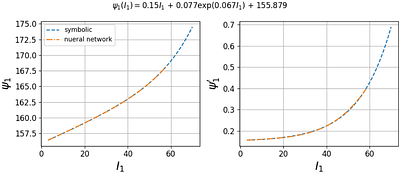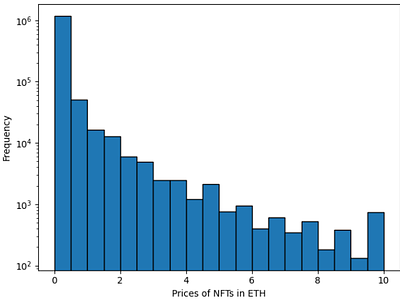By: Zhiming Li, Junzhe Jiang, Yushi Cao, Aixin Cui, Bozhi Wu, Bo Li, Yang Liu
Deep reinforcement learning (DRL) has revolutionized quantitative finance by achieving excellent performance without significant manual effort. Whereas we observe that the DRL models behave unstably in a dynamic stock market due to the low signal-to-noise ratio nature of the financial data. In this paper, we propose a novel logic-guided trading framework, termed as SYENS (Program Synthesis-based Ensemble Strategy). Different from the previo... more
Deep reinforcement learning (DRL) has revolutionized quantitative finance by achieving excellent performance without significant manual effort. Whereas we observe that the DRL models behave unstably in a dynamic stock market due to the low signal-to-noise ratio nature of the financial data. In this paper, we propose a novel logic-guided trading framework, termed as SYENS (Program Synthesis-based Ensemble Strategy). Different from the previous state-of-the-art ensemble reinforcement learning strategy which arbitrarily selects the best-performing agent for testing based on a single measurement, our framework proposes regularizing the model's behavior in a hierarchical manner using the program synthesis by sketching paradigm. First, we propose a high-level, domain-specific language (DSL) that is used for the depiction of the market environment and action. Then based on the DSL, a novel program sketch is introduced, which embeds human expert knowledge in a logical manner. Finally, based on the program sketch, we adopt the program synthesis by sketching a paradigm and synthesizing a logical, hierarchical trading strategy. We evaluate SYENS on the 30 Dow Jones stocks under the cash trading and the margin trading settings. Experimental results demonstrate that our proposed framework can significantly outperform the baselines with much higher cumulative return and lower maximum drawdown under both settings. less
Accelerating CFD Simulations of Microfluidic Devices by Exploiting Higher Levels of Abstraction
0upvotes
By: Michel Takken, Robert Wille
The design of microfluidic devices is a cumbersome and tedious process that can be significantly improved by simulation. Methods based on Computational Fluid Dynamics (CFD) are considered state-of-the-art but require extensive compute time-oftentimes limiting the size of microfluidic devices that can be simulated. Simulation methods that abstract the underlying physics on a higher level generally provide results instantly, but the fidelity ... more
The design of microfluidic devices is a cumbersome and tedious process that can be significantly improved by simulation. Methods based on Computational Fluid Dynamics (CFD) are considered state-of-the-art but require extensive compute time-oftentimes limiting the size of microfluidic devices that can be simulated. Simulation methods that abstract the underlying physics on a higher level generally provide results instantly, but the fidelity of these methods is usually worse. In this work, a simulation method that accelerates CFD simulations by exploiting simulation methods on higher levels of abstraction is proposed. Case studies confirm that the proposed method accelerates CFD simulations by multiple factors (often several orders of magnitude) while maintaining the fidelity of CFD simulations. less
Context, Composition, Automation, and Communication -- The C2AC Roadmap for Modeling and Simulation
0upvotes
By: Adelinde Uhrmacher, Peter Frazier, Reiner Hähnle, Franziska Klügl, Fabian Lorig, Bertram Ludäscher, Laura Nenzi, Cristina Ruiz-Martin, Bernhard Rumpe, Claudia Szabo, Gabriel A. Wainer, Pia Wilsdorf
Simulation has become, in many application areas, a sine-qua-non. Most recently, COVID-19 has underlined the importance of simulation studies but also limitations in current practices and methods. We identify four goals of methodological work for addressing these limitations. The first is to provide better support for capturing, representing, and evaluating the context of simulation studies, including research questions, assumptions, requir... more
Simulation has become, in many application areas, a sine-qua-non. Most recently, COVID-19 has underlined the importance of simulation studies but also limitations in current practices and methods. We identify four goals of methodological work for addressing these limitations. The first is to provide better support for capturing, representing, and evaluating the context of simulation studies, including research questions, assumptions, requirements, and activities that contributed to a simulation study and the generated artifacts, and how this contribution took place. In addition, the composition of simulation models and other products of simulation studies needs to be supported beyond syntactical coherence, including aspects of semantics and purpose, enabling their effective reuse. A higher degree of automating simulation studies will contribute to more systematic, standardized, qualitative simulation studies and their efficiency. Finally, it is essential to invest increased effort into effectively communicating results and the involved processes of simulation studies to enable their use in research and for decision-making. These goals are not pursued independently of each other, but they will benefit from and sometimes even rely on advances in each subfield. In the present paper, we explore the basis and interdependencies evident in current research and practice and delineate future research directions based on these considerations. less
By: Huajian Li, Longjian Li, Jiajian Liang
Over the past two decades, some scholars have noticed the correlation between quantum mechanics and finance/economy, making some novel attempts to introduce the theoretical framework of quantum mechanics into financial and economic research, subsequently a new research domain called quantum finance or quantum economy was set up. In particular, some studies have made their endeavour in the stock market, utilizing the quantum mechanical parad... more
Over the past two decades, some scholars have noticed the correlation between quantum mechanics and finance/economy, making some novel attempts to introduce the theoretical framework of quantum mechanics into financial and economic research, subsequently a new research domain called quantum finance or quantum economy was set up. In particular, some studies have made their endeavour in the stock market, utilizing the quantum mechanical paradigm to describe the movement of stock price. Nevertheless, the majority of researches have paid attention to describing the motion of a single stock, and drawn an analogy between the motion of a single stock and a one-dimensional infinite well, or one-dimensional harmonic oscillator model, whose modality looks alike to the one-electron Schr\"odinger equation, in which the information is solved analytically in most cases. Hitherto, the whole stock market system composed of all stocks and stock indexes have not been discussed. In this paper, the concept of stock molecular system is first proposed with pioneer. The modality of stock molecular system resembles the multi-electrons Schr\"odinger equation with Born-Oppenheimer approximation. Similar to the interaction among all nuclei and electrons in a molecule, the interaction exist among all stock indexes and stocks. This paper also establish the stock-index Coulomb potential, stock-index Coulomb potential, stock-stock Coulomb potential and stock coulomb correlation terms by statistical theory. At length, the conceive and feasibility of drawing upon density functional theory (DFT) to solve the Schr\"odinger equation of stock molecular system are put forward together with proof, ending up with experiments executed in CSI 300 index system. less
By: Koji Aoshima, Martin Servin
We investigate how well a wheel loader simulator can replicate a real one when performing bucket filling in a pile of gravel. The comparisons are made using field test time series of the vehicle motion and actuation forces, loaded mass, and total work. The vehicle was modeled as a rigid multibody system with frictional contacts, driveline, and linear actuators. For the soil, we tested discrete element models of different resolutions, with a... more
We investigate how well a wheel loader simulator can replicate a real one when performing bucket filling in a pile of gravel. The comparisons are made using field test time series of the vehicle motion and actuation forces, loaded mass, and total work. The vehicle was modeled as a rigid multibody system with frictional contacts, driveline, and linear actuators. For the soil, we tested discrete element models of different resolutions, with and without multiscale acceleration. The spatio-temporal resolution ranged between 50-400 mm and 2-500 ms, and the computational speed was between 1/10,000 to 5 times faster than real-time. The simulation-to-reality gap was found to be around 10% and exhibited a weak dependence on the level of fidelity, i.e. accessible with real-time simulation and faster. Furthermore, the sensitivity of an optimized force feedback controller under transfer between different simulation domains was investigated. The domain bias was observed to cause a performance reduction of 5% despite the domain gap being about 15%. less
Physics-constrained symbolic model discovery for polyconvex incompressible hyperelastic materials
0upvotes
By: Bahador Bahmani, WaiChing Sun
We present a machine learning framework capable of consistently inferring mathematical expressions of the hyperelastic energy functionals for incompressible materials from sparse experimental data and physical laws. To achieve this goal, we propose a polyconvex neural additive model (PNAM) that enables us to express the hyperelasticity model in a learnable feature space while enforcing polyconvexity. An upshot of this feature space obtained... more
We present a machine learning framework capable of consistently inferring mathematical expressions of the hyperelastic energy functionals for incompressible materials from sparse experimental data and physical laws. To achieve this goal, we propose a polyconvex neural additive model (PNAM) that enables us to express the hyperelasticity model in a learnable feature space while enforcing polyconvexity. An upshot of this feature space obtained via PNAM is that (1) it is spanned by a set univariate basis that can be re-parametrized with a more complex mathematical form, and (2) the resultant elasticity model is guaranteed to fulfill the polyconvexity, which ensures that the acoustic tensor remains elliptic for any deformation. To further improve the interpretability, we use genetic programming to convert each univariate basis into a compact mathematical expression. The resultant multi-variable mathematical models obtained from this proposed framework are not only more interpretable but are also proven to fulfill physical laws. By controlling the compactness of the learned symbolic form, the machine learning-generated mathematical model also requires fewer arithmetic operations than the deep neural network counterparts during deployment. This latter attribute is crucial for scaling large-scale simulations where the constitutive responses of every integration point must be updated within each incremental time step. We compare our proposed model discovery framework against other state-of-the-art alternatives to assess the robustness and efficiency of the training algorithms and examine the trade-off between interpretability, accuracy, and precision of the learned symbolic hyperelasticity models obtained from different approaches. Our numerical results suggest that our approach extrapolates well outside the training data regime due to the precise incorporation of physics-based knowledge. less
By: Jan N. Fuhg, Reese E. Jones, Nikolaos Bouklas
Data-driven constitutive modeling with neural networks has received increased interest in recent years due to its ability to easily incorporate physical and mechanistic constraints and to overcome the challenging and time-consuming task of formulating phenomenological constitutive laws that can accurately capture the observed material response. However, even though neural network-based constitutive laws have been shown to generalize profici... more
Data-driven constitutive modeling with neural networks has received increased interest in recent years due to its ability to easily incorporate physical and mechanistic constraints and to overcome the challenging and time-consuming task of formulating phenomenological constitutive laws that can accurately capture the observed material response. However, even though neural network-based constitutive laws have been shown to generalize proficiently, the generated representations are not easily interpretable due to their high number of trainable parameters. Sparse regression approaches exist that allow to obtaining interpretable expressions, but the user is tasked with creating a library of model forms which by construction limits their expressiveness to the functional forms provided in the libraries. In this work, we propose to train regularized physics-augmented neural network-based constitutive models utilizing a smoothed version of $L^{0}$-regularization. This aims to maintain the trustworthiness inherited by the physical constraints, but also enables interpretability which has not been possible thus far on any type of machine learning-based constitutive model where model forms were not assumed a-priory but were actually discovered. During the training process, the network simultaneously fits the training data and penalizes the number of active parameters, while also ensuring constitutive constraints such as thermodynamic consistency. We show that the method can reliably obtain interpretable and trustworthy constitutive models for compressible and incompressible hyperelasticity, yield functions, and hardening models for elastoplasticity, for synthetic and experimental data. less
By: Aditi Agarwal, Anupam Saxena, Prabhat Kumar
Python serves as an open-source and cost-effective alternative to the MATLAB programming language. This paper introduces a concise topology optimization Python code, named ``PyHexTop," primarily intended for educational purposes. Code employs hexagonal elements to parameterize design domains as such elements provide checkerboard-free optimized design naturally. PyHexTop is developed based on the ``HoneyTop90" MATLAB code~\cite{kumar2023hone... more
Python serves as an open-source and cost-effective alternative to the MATLAB programming language. This paper introduces a concise topology optimization Python code, named ``PyHexTop," primarily intended for educational purposes. Code employs hexagonal elements to parameterize design domains as such elements provide checkerboard-free optimized design naturally. PyHexTop is developed based on the ``HoneyTop90" MATLAB code~\cite{kumar2023honeytop90} and uses the NumPy and SciPy libraries. Code is straightforward and easily comprehensible, proving a helpful tool that can help people new in the topology optimization field to learn and explore. PyHexTop is specifically tailored to address compliance minimization with specified volume constraints. The paper provides a detailed explanation of the code for solving the MBB design and extensions to solve problems with varying boundary and force conditions. The code is publicly shared at: \url{https://github.com/PrabhatIn/PyHexTop.} less
By: Vivian Ziemke, Benjamin Estermann, Roger Wattenhofer, Ye Wang
In the evolving landscape of digital art, Non-Fungible Tokens (NFTs) have emerged as a groundbreaking platform, bridging the realms of art and technology. NFTs serve as the foundational framework that has revolutionized the market for digital art, enabling artists to showcase and monetize their creations in unprecedented ways. NFTs combine metadata stored on the blockchain with off-chain data, such as images, to create a novel form of digit... more
In the evolving landscape of digital art, Non-Fungible Tokens (NFTs) have emerged as a groundbreaking platform, bridging the realms of art and technology. NFTs serve as the foundational framework that has revolutionized the market for digital art, enabling artists to showcase and monetize their creations in unprecedented ways. NFTs combine metadata stored on the blockchain with off-chain data, such as images, to create a novel form of digital ownership. It is not fully understood how these factors come together to determine NFT prices. In this study, we analyze both on-chain and off-chain data of NFT collections trading on OpenSea to understand what influences NFT pricing. Our results show that while text and image data of the NFTs can be used to explain price variations within collections, the extracted features do not generalize to new, unseen collections. Furthermore, we find that an NFT collection's trading volume often relates to its online presence, like social media followers and website traffic. less
By: Khaish Singh Chadha, Prabhat Kumar
This paper presents an adaptive convolutional neural network (CNN) architecture that can automate diverse topology optimization (TO) problems having different underlying physics. The architecture uses the encoder-decoder networks with dense layers in the middle which includes an additional adaptive layer to capture complex geometrical features. The network is trained using the dataset obtained from the three open-source TO codes involving d... more
This paper presents an adaptive convolutional neural network (CNN) architecture that can automate diverse topology optimization (TO) problems having different underlying physics. The architecture uses the encoder-decoder networks with dense layers in the middle which includes an additional adaptive layer to capture complex geometrical features. The network is trained using the dataset obtained from the three open-source TO codes involving different physics. The robustness and success of the presented adaptive CNN are demonstrated on compliance minimization problems with constant and design-dependent loads and material bulk modulus optimization. The architecture takes the user's input of the volume fraction. It instantly generates optimized designs resembling their counterparts obtained via open-source TO codes with negligible performance and volume fraction error. less









